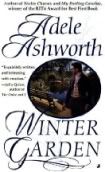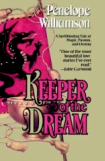Famous Regency places and clubs
Continuing with our Regency lingo dictionary, I’ve put together a few of the most prominent locations that are regularly mentioned in the Regency period historical romances. Some of these I already knew, or had guessed the answer to, but others had no bloody clue so would just skip them and/or imagined the characters in my own pretend scenario (usually a strip club of sorts LOL).
Almack’s - Assembly rooms in King Street, London, where the most exclusive private subscription balls of the ton were held each Wednesday night of the Season. To be found worthy of the privilege of buying a subscription to the Wednesday night balls, (a ticket known as a “voucher”) you had to be personally known to one of the seven powerful Society hostesses who organized it. These ladies were the so-called Patronesses of Almack’s, and fashionable society lived in fear of getting on the bad side of any of them. Only the creme de la creme of Society were permitted to come.
Ascot - England’s most prestigious horse-racing track.
Bath - City in the western county of Somerset, England, which became wildly popular in the mid-1700’s for the healing properties of its natural hot springs and mineral waters. (Thus the name!) Given the craze for classical antiquity, the archeological discovery of an ancient Roman bath in the center of the city kicked off a huge fad for going to Bath “to take the waters.” Supervised by medical experts, people went there hoping to be cured of everything from gout to infertility. As England’s first true planned city established during an architectural golden age, Bath is a World Heritage site and a must-see destination for tourists today! The city and its genteel social life are featured in many of Jane Austen’s novels. By the Regency, it had lost popularity among the younger set due to the rise of Brighton on the southern coast. Instead of taking the spa waters, the hot new health craze that replaced it was sea-bathing. Bath came to be associated with sickly, elderly people.
Bow Street - Location of the justice offices where the London detectives known as the Bow Street Runners were based.
Brighton - Seaside town about forty-five miles away from London, where people went to improve their health in the craze for sea-bathing—and to party! Brighton had a festive reputation, which was why it loved Prinny and Prinny loved it. It was here in his favorite getaway spot that he built his fantastic Pavilion. Brighton was annually the next stop on the social whirl for high society following the Season in London.
Brooke’s - Top gentlemen’s club of the Whigs in St. James’s Street, London.
Covent Garden - An Italian-style piazza built in the early 1600’s by Inigo Jones, overlooked by a church, Covent Garden offered fashionable housing to the rich for a while, but when they moved away, drifting towards Mayfair, it became the main fruit and vegetable market of London by day; at night it became what we’d call a “red light district,” the most reliable place to pick up prostitutes. Today it is part of London’s theatre district.
Gretna Green - Famous town just over the border in Scotland, where eloping lovers could procure a legal marriage even if one of the parties was underage. (In England, parental consent was required for a legal marriage for anyone under twenty-one.)
Gunter’s - A fashionable Regency ice-cream shop in Berkeley Square.
Hyde Park - A nearly 400-acre park located in London’s ultra-fashionable West End. Five o’clock p.m. was the fashionable hour to see and be seen promenading in Hyde Park along its manmade ornamental pond called the Serpentine, or driving one’s fanciest carriage around the graveled pleasure-driving roads known as the Ring. Rotten Row was the famous stretch of road in the park notorious for speed demons either on horseback or in carriages. For the fair sex, there was the Ladies’ Mile.
King’s Bench - The arm of the superior court of the common law system responsible for hearing criminal (as opposed to civil or Chancery) cases. It sat in Westminster Hall.
White’s - A London gentlemen’s club, established at 4 Chesterfield Street in 1693 by Francesco Bianco. It moved to 37-38 St. James, on the east side of the street, in 1778. From 1783 it was the unofficial headquarters of the Tory party, facing the Whig’s Brooks’ club on the other side of the street. A few apolitical and affable gentlemen managed to belong to both.
*Regency Glossary by Gaelen Foley
*Answer.com
Almack’s - Assembly rooms in King Street, London, where the most exclusive private subscription balls of the ton were held each Wednesday night of the Season. To be found worthy of the privilege of buying a subscription to the Wednesday night balls, (a ticket known as a “voucher”) you had to be personally known to one of the seven powerful Society hostesses who organized it. These ladies were the so-called Patronesses of Almack’s, and fashionable society lived in fear of getting on the bad side of any of them. Only the creme de la creme of Society were permitted to come.
Ascot - England’s most prestigious horse-racing track.
Bath - City in the western county of Somerset, England, which became wildly popular in the mid-1700’s for the healing properties of its natural hot springs and mineral waters. (Thus the name!) Given the craze for classical antiquity, the archeological discovery of an ancient Roman bath in the center of the city kicked off a huge fad for going to Bath “to take the waters.” Supervised by medical experts, people went there hoping to be cured of everything from gout to infertility. As England’s first true planned city established during an architectural golden age, Bath is a World Heritage site and a must-see destination for tourists today! The city and its genteel social life are featured in many of Jane Austen’s novels. By the Regency, it had lost popularity among the younger set due to the rise of Brighton on the southern coast. Instead of taking the spa waters, the hot new health craze that replaced it was sea-bathing. Bath came to be associated with sickly, elderly people.
Bow Street - Location of the justice offices where the London detectives known as the Bow Street Runners were based.
Brighton - Seaside town about forty-five miles away from London, where people went to improve their health in the craze for sea-bathing—and to party! Brighton had a festive reputation, which was why it loved Prinny and Prinny loved it. It was here in his favorite getaway spot that he built his fantastic Pavilion. Brighton was annually the next stop on the social whirl for high society following the Season in London.
Brooke’s - Top gentlemen’s club of the Whigs in St. James’s Street, London.
Covent Garden - An Italian-style piazza built in the early 1600’s by Inigo Jones, overlooked by a church, Covent Garden offered fashionable housing to the rich for a while, but when they moved away, drifting towards Mayfair, it became the main fruit and vegetable market of London by day; at night it became what we’d call a “red light district,” the most reliable place to pick up prostitutes. Today it is part of London’s theatre district.
Gretna Green - Famous town just over the border in Scotland, where eloping lovers could procure a legal marriage even if one of the parties was underage. (In England, parental consent was required for a legal marriage for anyone under twenty-one.)
Gunter’s - A fashionable Regency ice-cream shop in Berkeley Square.
Hyde Park - A nearly 400-acre park located in London’s ultra-fashionable West End. Five o’clock p.m. was the fashionable hour to see and be seen promenading in Hyde Park along its manmade ornamental pond called the Serpentine, or driving one’s fanciest carriage around the graveled pleasure-driving roads known as the Ring. Rotten Row was the famous stretch of road in the park notorious for speed demons either on horseback or in carriages. For the fair sex, there was the Ladies’ Mile.
King’s Bench - The arm of the superior court of the common law system responsible for hearing criminal (as opposed to civil or Chancery) cases. It sat in Westminster Hall.
White’s - A London gentlemen’s club, established at 4 Chesterfield Street in 1693 by Francesco Bianco. It moved to 37-38 St. James, on the east side of the street, in 1778. From 1783 it was the unofficial headquarters of the Tory party, facing the Whig’s Brooks’ club on the other side of the street. A few apolitical and affable gentlemen managed to belong to both.
*Regency Glossary by Gaelen Foley
*Answer.com
Labels: for the love of rakes and rogues, romance baby






















Hey Harlot,
Nice aricle, i loved redaing it.. All this regency cant is so addictive and interesting.
I guessed sometimes too, but not of strip clubs lol
I realised that i mostly guessed right, "right downy one", aren't I? ;)
Fun article :)
1/24/2006 11:42:00 AM
Hey Simi!
Regency period is fascinating, isn't it? Love everything about it. I think it's an era made for romance LOL.
So are you reading DEADLY series now?
1/25/2006 12:41:00 AM
Post a comment
Home